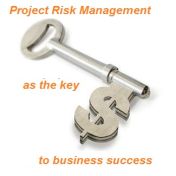How to Develop and Share a Project Success Plan (PSP)
 Success management is one of the key responsibilities of a project manager who wants to succeed in managing the project. Success management is an effort to make the project successful through advanced planning, tracking and control. The manager needs to develop a project success plan (PSP) and conduct a meeting to announce the plan and discuss it with the team. In this article we’ll talk about project success management and its primary output – the success plan. We’ll also focus on the key items of an agenda for a meeting dedicated to sharing the plan between members of the project team.
Success management is one of the key responsibilities of a project manager who wants to succeed in managing the project. Success management is an effort to make the project successful through advanced planning, tracking and control. The manager needs to develop a project success plan (PSP) and conduct a meeting to announce the plan and discuss it with the team. In this article we’ll talk about project success management and its primary output – the success plan. We’ll also focus on the key items of an agenda for a meeting dedicated to sharing the plan between members of the project team.
What is a Project Success Plan
It is a platform for ensuring that the team moves on the right direction once the project has been started. The Project Success Plan (PSP) is a form of the project management plan dedicated to the identification of key activities for managing the project. PSP is developed by the project manager who describes the vision on how the project will be performed and controlled during the implementation lifecycle.
The major idea of success management is to deliver a project on time, within budget and as per specification. The purpose of the success plan is to state “what success means”. The plan documents the manager’s vision of success while the team should review and discuss the plan on the meeting to share the vision.
When developing the project success plan, the manager needs to use project artefacts such as Project Charter and Business Case. The key part of the plan is a set of success criteria. The manager needs to determine such criteria associated with key project characteristics such as assumptions, requirements, milestones, scope, quality, deliverables. Because PSP is an attempt to analyze the best way for implementation, this document should be enforced with proper estimations and evaluations.
Success Management Meeting
It is obvious that every project will gain more chances for successful completion if the success plan has been developed and introduced into the project environment. How to make this effort? The best way is through conducting a meeting with the team to discuss and agree on the following three key aspects of the project success plan:
- The plan is dedicated to make the project successful. Question: Can we say that each person participating in the project shares this aspect and agrees on the core reasons for the project’s existence?
- The plan encourages the team to have one and the same vision and to work together for achieving shared goals and carrying out duties and responsibilities. Question: Can we say that each member of the team agrees on existing methods of teamwork, understands the team collaboration approach, and follows requirements of governance processes?
- The plan focuses on technical assumptions (management methodology, work breakdown structure, budget, changes) making the project feasible. Question: Can we say that the team is ready to do assignments and tasks considering the assumptions?
These three aspects of the plan should be reviewed and discussed during a project success management meeting under the supervision of a skilled facilitator. Such a meeting is a good mechanism to ensure that a the success plan is well-grounded and meets the key goal – to deliver the project on time, within budget and as per spec.
Meeting Agenda
To develop an agenda for the meeting, the manager needs to remember that PSP should bear relevance to the core deliverables regarding scope, budget, schedule and quality. Here are the key items of a sample agenda for the success management meeting:
- Review executive summary of the project.
- Highlight the definition of “project success” and present evaluation criteria.
- Present the chosen implementation methodology.
- Review the vision statement and review management fundamentals and principles.
- Discuss assumptions.
- Review scope, budget, schedule and quality of the project.
- Introduce governance model and strategy.
- Highlight organizational structure and role definitions.
- Make an overview of communications management strategy.
- Review methods for control and change management.














